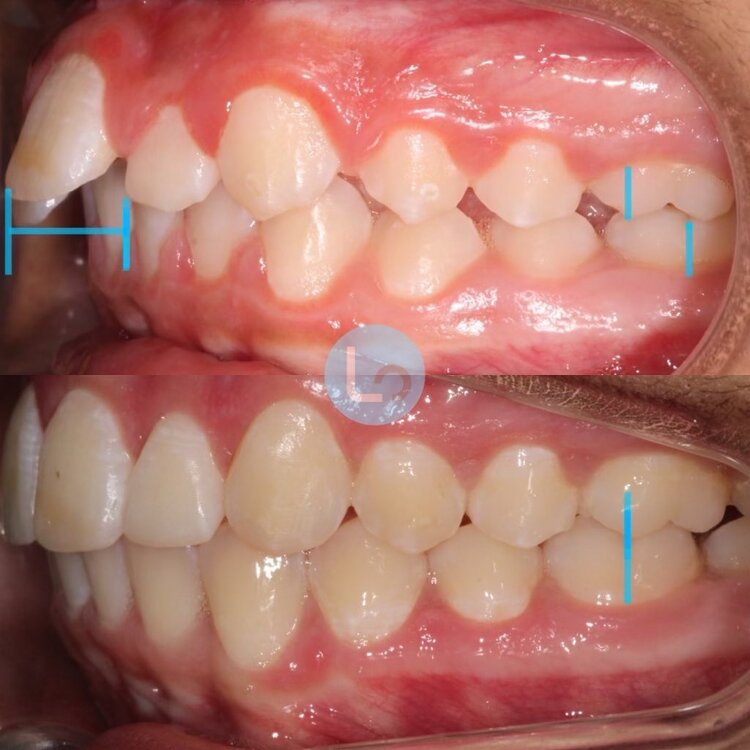See This Report about Legacy Orthodontics
The Best Guide To Legacy Orthodontics
Table of ContentsSome Of Legacy OrthodonticsThe Greatest Guide To Legacy OrthodonticsThe 9-Second Trick For Legacy OrthodonticsThe Single Strategy To Use For Legacy OrthodonticsOur Legacy Orthodontics PDFs
At Advanced Orthodontics, we give clients with a holistic therapy experience. Furthermore, we offer adjustable treatment schedules, versatile repayment options and a fun, enjoyable experience. orthodontics. Phone call ( 480) 357-4900 today for more details and timetable a consultation.An orthodontist is a dental practitioner educated to diagnose, prevent, and treat teeth and jaw abnormalities. They deal with existing problems and are educated to recognize problems that may create in the future. Orthodontists deal with individuals of all ages, from kids to grownups. Individuals frequently associate a best smile with excellent health.
Malocclusion, or misaligned teeth, can lead to oral issues, consisting of dental cavity, gum tissue illness, and hard or painful eating. Not every person is birthed with straight teeth. If you have a negative bite or huge spaces in between your teeth, you may wish to seek advice from a dental practitioner focusing on orthodontic treatment.
4 Simple Techniques For Legacy Orthodontics
( Image Credit: DigitalVision/Getty Images) Orthodontists make use of taken care of and removable dental tools, like dental braces, retainers, and bands, to transform the setting of teeth in your mouth. Orthodontic treatment is for dental problems, including: Crooked teethBite troubles, like an overbite or an underbiteCrowded teeth or teeth that are also much apartJaw misalignmentThe goal of orthodontic treatment is to boost your bite.
A healthy and balanced bite ensures you can consume, eat, and talk correctly. While you could think about orthodontists as mainly for kids or young adults that require dental braces, they can correct oral issues at any kind of age. Orthodontists go to college, oral college, and orthodontic college. After graduation, they invest 2 or 3 years in an orthodontic residency program.
All orthodontists are dental professionals, however not all dental practitioners are orthodontists. Orthodontic residency programs offer intensive, focused instruction for dental professionals. They concentrate on two locations: Just how to appropriately and safely move teeth Exactly how to properly guide development in the teeth, jaw, and faceOnce an orthodontist has finished training, they have the choice to come to be board accredited.
The Ultimate Guide To Legacy Orthodontics
Misalignment, or malocclusion, is one of the most common factor people see an orthodontist. It is hereditary and is the outcome of dimension distinctions between the upper and lower jaw or between the jaw and teeth. Malocclusion brings about tooth overcrowding, a misshapen jaw, or irregular bite patterns. Malocclusion is normally treated with: Your orthodontist affixes metal, ceramic, or plastic square bonds to your teeth.
If you have just minor malocclusion, you might be able to make use of clear braces, called aligners, as opposed to traditional braces (https://my.omsystem.com/members/legacyortho). Some people need a Discover More headwear to assist move teeth right into line with stress from outside the mouth. After dental braces or aligners, you'll require to wear a retainer. A retainer is a customized gadget that maintains your teeth in area.
They can develop added space in the mouth without having to pull teeth. Orthodontists make use of cables, medical screws, or plates to support your jaw bone.
You may need to see an orthodontist if you have: Crowding or otherwise sufficient area for all of your teethOverbite, when your top teeth come your bottom teethUnderbite, when your bottom teeth are as well much forwardSpacing or problems with gapsCrossbite, which is when your top teeth fit behind your bottom teeth when your mouth is closedOpen bite or an upright gap between your front bottom and upper teethMisplaced midline, when the center of your base and upper teeth don't align Correcting a dental malocclusion can: Make biting, chewing, and speaking easierImprove the symmetry of our face and your general appearanceEase pain from temporomandibular joint disordersSeparate your teeth and make them less complicated to clean, aiding stop dental cavity or tooth cavities It's typically a dental practitioner that initially notices misaligned teeth during a routine test.
An Unbiased View of Legacy Orthodontics

Throughout your first orthodontic assessment, you'll likely have: An oral examPhotos taken of your face and smileDental X-raysPanoramic (360 degree) X-rays of your face and headImpressions to create molds of your teethThese examinations will aid your orthodontist recognize exactly how to continue with your therapy. clear braces. An orthodontist is a dental expert who's had training to treat your teeth and jaw
Orthodontists may carry out surgery, exams,X-rays,and more to aid you attain a much more comfortable, much healthier smile. An orthodontist is concentrated on your bite, so something like a broken tooth would be handled by a dental expert. Orthodontists are dental professionals but not all dental practitioners are orthodontists. Orthodontists are concentrated on your bite, or the means your teeth meshed, and the straightness of your teeth.
Ever wondered exactly how stars constantly seem to have flawlessly straightened teeth? Orthodontists are oral professionals who focus on dealing with abnormalities in the teeth and jaws.
The Legacy Orthodontics Ideas

While dental braces are the most generally recognized orthodontic therapy, orthodontists have a varied toolkit at their disposal. The certain technique picked depends upon the extent of the instance, the client's age, and specific choices. These tried-and-true braces utilize a system of braces adhered to the teeth and linked by cords.
Clear aligners, like Invisalign, are a popular choice for people seeking a more discreet therapy alternative. These detachable trays are customized to gradually move the teeth's placement. Headgear may be made use of together with braces or aligners to use additional targeted forces, especially for correcting jaw inconsistencies. In instances of slim jaws, palatal expanders can be used to develop area for appropriate tooth placement.